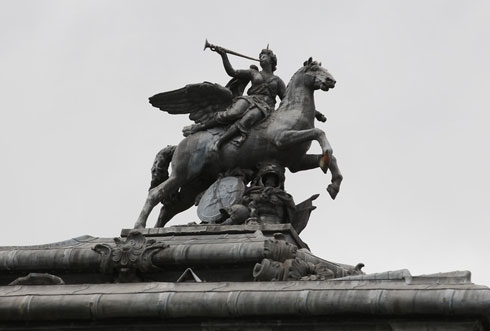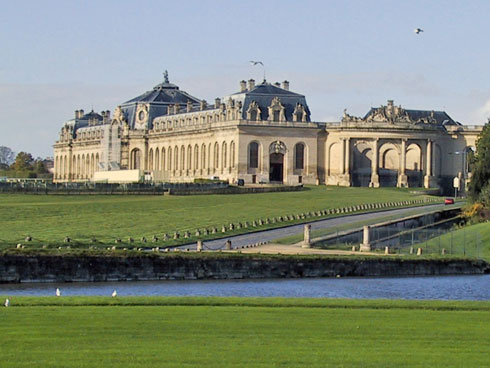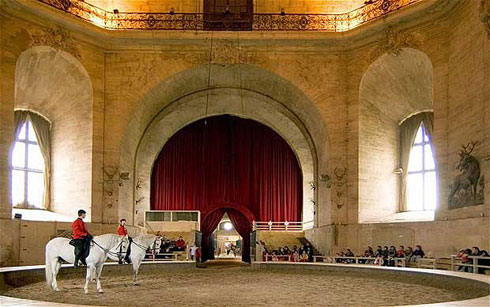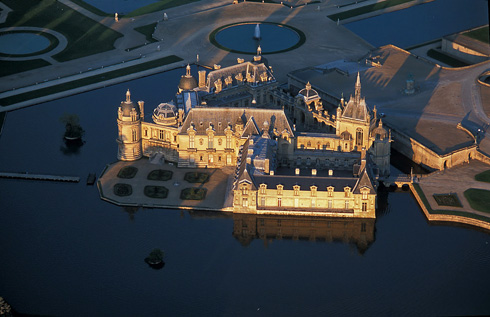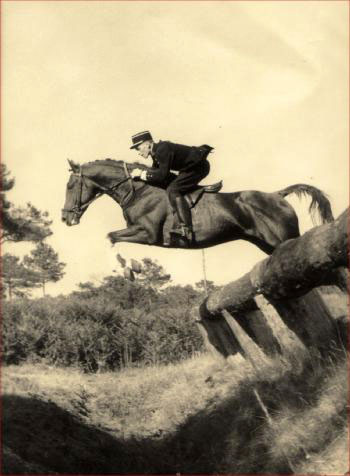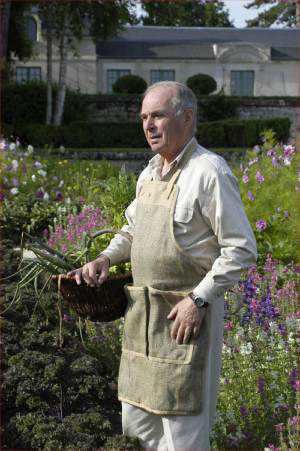A Museum Where Horses Live
By Paula Parisi September 12, 2012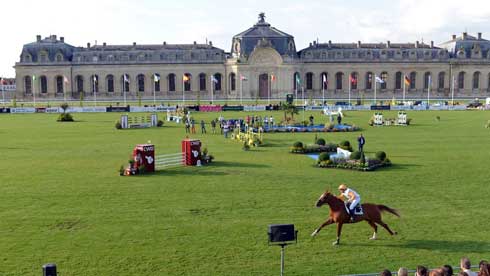
The Grand Prix field at Chantilly, FRA, is a carpet of emerald spread before the jewel that is Les Grandes Ecueries. (Photo by Alan Davidson)
With about 200,000 visitors per year, the Chantilly Living Museum of the Horse (Musée Vivant du Cheval) in France is one of the most-visited equestrian sites in the world.
The name is literally accurate ―in addition to art and related items, about 30 breeds of horse are on display. But the most magnificent artifact is the structure itself, the Grand Stables―Les Grandes Écuries.
The Grand Stables were built in 1719 at the request of Louis Henri, the Duc de Bourbon. Legend has it the Duc believed he would be reincarnated as a horse, and asked architect Jean Aubert to create a stables worthy of an equine of high rank.
The resulting structure sprawls more than 600 feet (nearly the length of two football fields), built to hold 250 horses and 300 hunting dogs. Today, its 31 rooms hold 1,200 paintings, drawings, sculptures and ceramics, relating to topics including horse-drawn transport, tack, equine art, health and the horse’s role in society.
Situated about 25 miles outside Paris, Chantilly is essentially a town that consists of one grand estate in the middle of a national forest. Les Grandes Écuries is on the grounds of the main Château de Chantilly, which includes the Musée Condé, a massive library and gardens. Sprawling over 19,000 acres that also include a 160-acre racetrack complex, the Hippodrome, the Château was completed in 1531 for the Montmorency family. (The Château and Great Stables were used in the 1985 James Bond movie A View To A Kill.)
The rooftop bronze, Renommée (“Fame”) on the Living Horse Museum, is a replica that was added in 1989. The original, along with a fountain in the kennel courtyard, was melted to make bayonets during the French Revolution (1789-99). The Château was also destroyed, but due to its utility as an army barracks, the stables were spared.
After Henri d’Orléans, the duc d’Aumale, inherited the property he rebuilt the mansion (1875–1881) to the design of Honoret Daumet. In 1886 the duc d’Aumale donated the chateau, stables and about 2,000 acres of land to the Institut de France, with the stipulation it be kept intact. (The rest of the property was bequeathed to the Institut on his death, 11 years later).
It was riding master Yves Bienaimé, who began his career at the Grand Stables in 1959, worked in the lesson program there for 20 years before taking steps to set the stables on a path to restoration. It took four years of negotiations with the Institut, but in June of 1982 the Living Museum of the Horse opened.
Bienaimé began a fundraising effort and in 1989 replaced the Fame statue atop the structure. A major turning point occurred in 2006, when the Aga Khan IV became the Stables’ main benefactor through the establishment of the Foundation for the Safe-keeping and Development of the Chantilly Domain, which ensured ongoing restoration and care of the entire facility.
In 2010 French Culture Minister Frédéric Mitterand decorated the Aga Khan a Commander of the Order of Arts and Letters for undertaking through his foundation “an immense, 20-year project” to restore the estate of Chantilly, including the Musée Condé, considered one of the finest collections of paintings in France.
In an appreciative presentation speech Mitterand also linked the Aga Khan to equestrianism through his ownership of racehorses and “a strong family tradition, from the legendary epic of the First Aga Khan’s departure from Persia, on horses said to be the finest on earth.” A renovation of the hippodrome, or racetrack, portion of the property was completed in 2004.
True to its “Living” nature, the museum is designed to promote education by encouraging the public to interact with the horses. Three to five dressage demonstrations are given daily to demonstrate the basis of horsemanship. The grounds also host horse shows, such as the Global Champions Tour, a show jumping event that takes place each summer.
The current director of the museum is Sophie Bienaimé, daughter of the founder.
For more information, visit the following:
This article on the Living Horse Museum at France.com includes a good list of the breeds and artworks on display and other particulars. web.france.com/Landmarks/Living_Horses_Museum
Photos of the main Chateau www.wmf.org/slide-show/ch%C3%A2teau-de-chantilly
Short URL: https://theequestriannews.com/?p=12850



